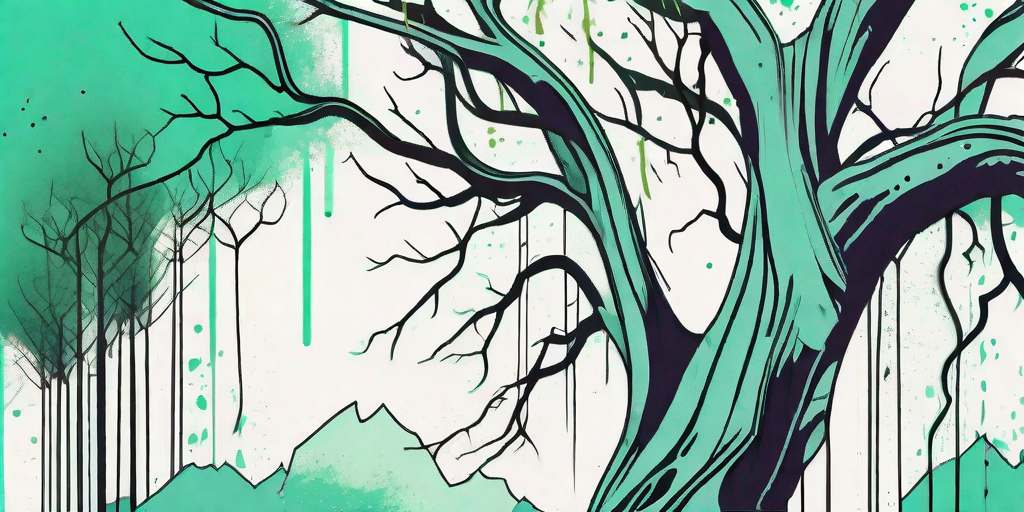
If you've ever had the pleasure of witnessing a Jacaranda tree in full bloom, you'll understand why some people consider it a heavenly vision. However, as with all things in life, even these purple wonders come with their own set of challenges. But fear not, brave gardener, for we are here to help you navigate the Jacaranda jungle and emerge victorious.
Understanding Your Jacaranda
Before we dive into the nitty-gritty of Jacaranda care, it's important to understand what makes these trees tick. Native to South America, Jacarandas thrive in warm climates and are known for their stunning purple blooms. However, these trees can be a bit of a drama queen, requiring just the right amount of sun, water, and attention to truly thrive.
So, if you're the type of person who enjoys a good challenge and doesn't mind getting their hands dirty, then the Jacaranda tree might just be your perfect match. But be warned, these trees are not for the faint of heart or the lazy gardener. They require dedication, patience, and a good sense of humor to handle their diva-like tendencies.
Climate Considerations
Jacarandas prefer a tropical or subtropical climate, but they can also tolerate mild winters. However, they do not do well in areas with harsh winters or heavy snowfall. So, if you live in a region that resembles the North Pole more than the Amazon, you might want to reconsider your choice of tree.
On the other hand, if you live in a climate that is warm year-round, then the Jacaranda will fit right in. These trees love the sun and need at least six hours of direct sunlight each day. So, make sure to plant your Jacaranda in a spot where it can soak up plenty of rays.
Watering Woes
When it comes to watering, Jacarandas can be a bit finicky. They prefer a deep watering once a week, but they don't like to have their feet wet. So, make sure your tree is planted in well-draining soil and try not to overwater it. Remember, it's always better to underwater than overwater when it comes to Jacarandas.
During the dry season, you might need to water your tree more frequently. But be careful not to drown it. A good rule of thumb is to water your Jacaranda when the top inch of soil is dry to the touch.
Common Jacaranda Problems and Solutions
Now that we've covered the basics of Jacaranda care, let's delve into some of the common problems you might encounter and how to overcome them. From pests to diseases, we've got you covered.
Remember, every tree is unique and what works for one might not work for another. So, don't be afraid to experiment and find what works best for your Jacaranda.
Pests
Like all trees, Jacarandas can fall victim to a variety of pests. Common culprits include aphids, scale insects, and caterpillars. These pests can cause a range of problems, from leaf damage to stunted growth.
The good news is that most of these pests can be easily controlled with a bit of vigilance and the right treatment. Regularly inspect your tree for signs of pests and treat any infestations as soon as possible. There are many organic and chemical treatments available, so choose the one that best suits your needs and preferences.
Diseases
Jacarandas are generally quite resilient, but they can still fall prey to various diseases. Fungal infections are the most common and can cause a range of symptoms, from leaf spots to root rot.
Prevention is always better than cure, so make sure to keep your tree healthy and stress-free. This includes providing it with the right amount of water and sunlight, as well as regular pruning to promote air circulation. If your tree does become infected, treat it promptly with a suitable fungicide.
FAQs
Why is my Jacaranda not blooming?
There could be several reasons why your Jacaranda is not blooming. It could be due to a lack of sunlight, improper watering, or simply because the tree is not mature enough. Jacarandas typically start blooming after 3-7 years of growth.
Can Jacarandas grow in pots?
Yes, Jacarandas can be grown in pots, but they will require more care and attention than those grown in the ground. Make sure to choose a large pot with good drainage and use a high-quality potting mix.
Conclusion
Surviving the Jacaranda apocalypse may seem like a daunting task, but with a bit of knowledge and a lot of patience, you can successfully navigate the challenges and enjoy the rewards of these beautiful trees. Remember, every gardener has their own unique journey, so don't be discouraged if your Jacaranda doesn't behave exactly as you expect. Keep learning, keep experimenting, and most importantly, keep having fun.
So, go forth, brave gardener, and conquer the Jacaranda jungle. We believe in you!















